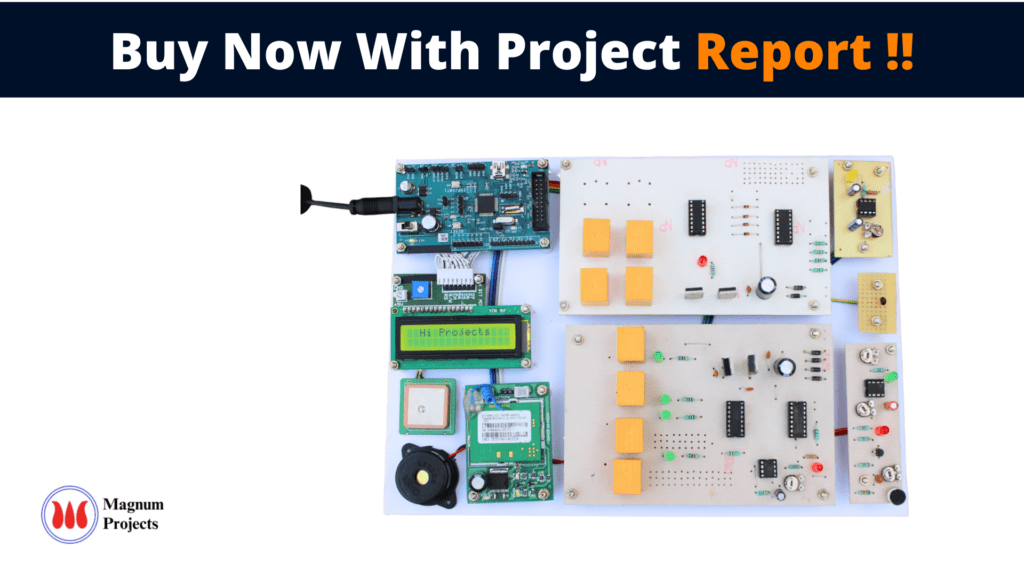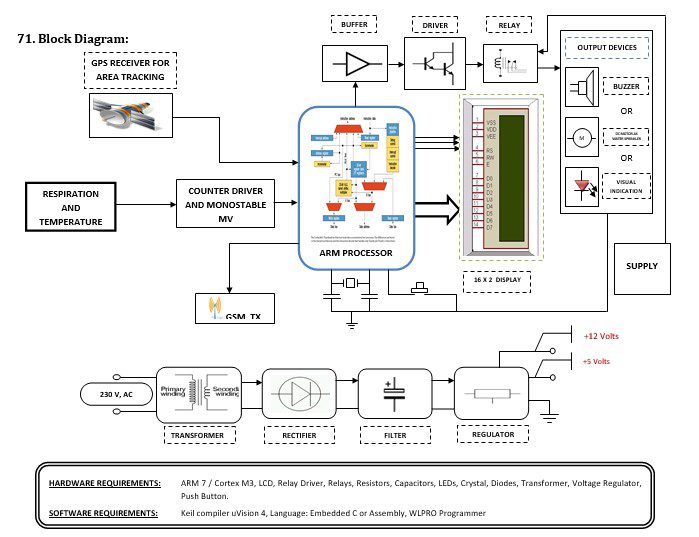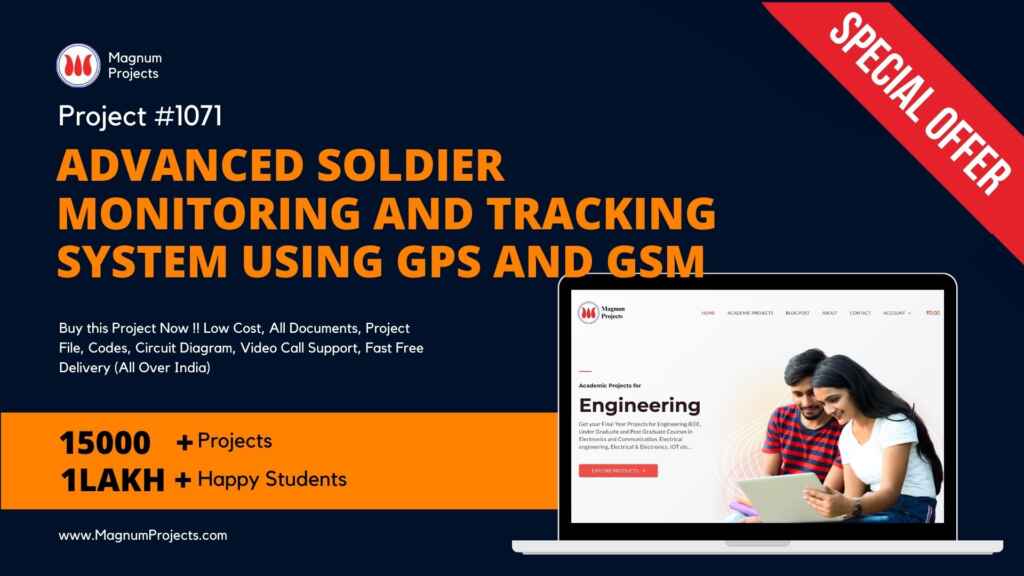Table of Contents
Introduction:


The infantry soldier of tomorrow promises to be one of the most technologically advanced modern warfare has ever seen. Around the world, various research programs. The challenge was to integrate the piecemeal components into a lightweight package that could achieve the desired result without being too bulky and cumbersome or requiring too much power. Communicating with the base station becomes the fundamental challenge in military operations also the proper navigation between soldier’s organizations plays an important role in careful planning and co-ordination. So this paper focuses on tracking the location of soldiers from GPS, which is useful for control room stations to know the exact location of a soldier and accordingly, they will guide them Also High-speed, short soldier wireless communications to relay information on situational awareness, such as Biosensors, GPS navigation, Wireless communication


Block diagram explanation:
Power supply unit:
This section needs 2 voltages +12 and +5 Volts, as working voltages Hence specially designed power supply is constructed to get a regulated power supply.
.
Measurement of Respiration & Temperature:
Thermister is used for the measurement of body temperature and respiratory temperature. This Thermister is a passive transducer and its resistance depends on the heat being applied to it. We have arranged the sensor in the potential divider circuit. This sensor exhibits a large change in resistance with a change in body temperature.
The respiratory rate is determined by holding the sensor near the nose. The temperature sensor part is attached to the patient whose temperature has to be measured, which changes the values and thus the corresponding change in the temperature is displayed on the monitor graphically. Also, all temperature measurements are updated in the patient’s database. Here in our project, we use a bead temperature sensor.
ARM 7:
The heart of the system is the microcontroller which will access the data. In our project, ARM7 is used. The ARM7 which we used for our project is LPC2148 (PHILLIPS) ARM7 is a high-performance, low-cost, low-power consumption RISC processor. For a variety of areas, such as embedded control, multimedia, DSP, and mobile applications, ARM architecture is the first RISC microprocessor designed for the low-budget market. The embedded operating system will be subject to certain restrictions. But because of its low price, reliability, and other factors, it is widely used in various industrial controllers.
Buffer:
Buffers do not affect the logical state of a digital signal (i.e. a logic 1 input results in a logic 1 output whereas logic 0 input results in a logic 0 output). Buffers are normally used to provide extra current drive at the output but can also be used to regularize the logic present at an interface.
Driver:
This section is used to drive the relay where the output is the complement of input which is applied to the drive but the current will be amplified.
Relay:
It is an electromagnetic device that is used to drive the load connected across the relay and the o/p of the relay can be connected to the controller or load for further processing.
Methodology:
A robust accurate positioning system with seamless indoor and outdoor coverage is a highly needed tool for increasing safety in emergency response and military operation. GPS-based positioning methods are mainly used to field rescue. The position and orientation of the rescuer and the trapped are acquired using a GPS chip. Using the GPS data of both the units the relative distance, height, and orientation between them are calculated from the geometric relationships based on a series of formulas in Geographic Information Science (GIS). Using this technology, we are doing the navigation between two soldiers. the data will be sent wirelessly by RF Transceiver. This device can do accurate coordination via wireless communication, helping soldiers with situational awareness. GPS modules have serial interfaces. The receiver information is broadcast via this interface in a special data format. This format is standardized by the National Marine Electronics Association (NMEA).
Applications:
- Privacy of telecommunications
- Home location register
- Surveillance
- Military
Advantages & Disadvantages:
Advantages:
1. We can monitor the health in real- time
2. A sensor network-based health monitoring system that is dependable and safe.
3. Automated and continuous monitoring of patients can reveal problems at an early stage leading to better control.
4. Utilizing medical facilities if only the condition is very serious.
5. The system has high performance, high reliability, and low power consumption.
Disadvantages:
1. The temperature-dependent and dynamic characteristics change with different levels of ambient light and temperature level.




